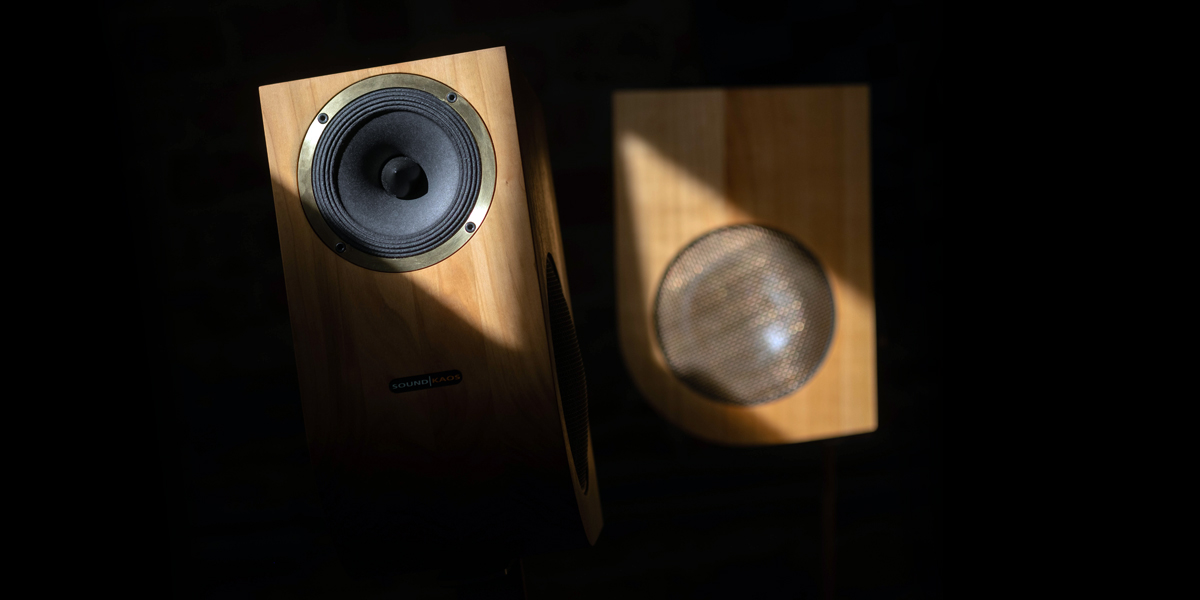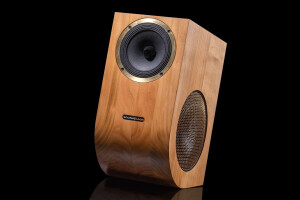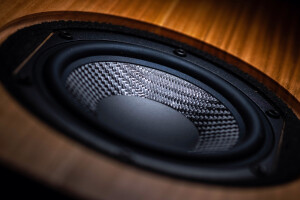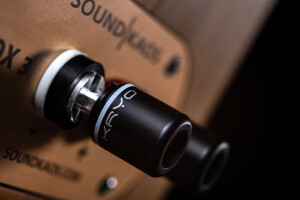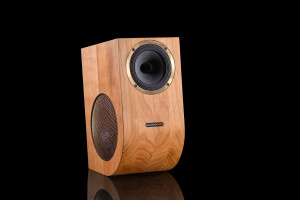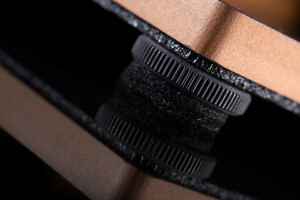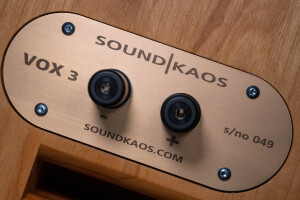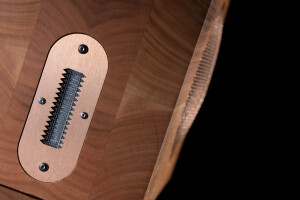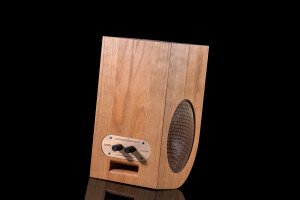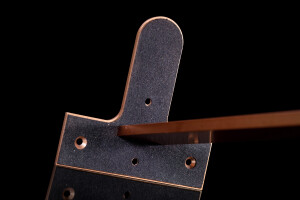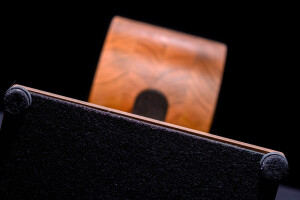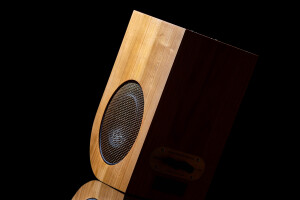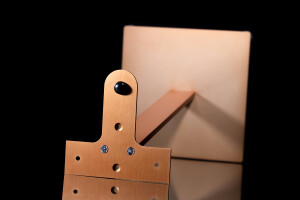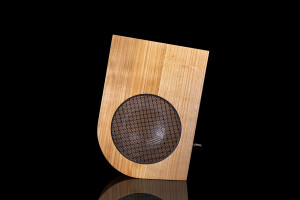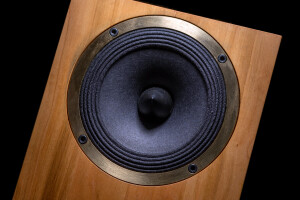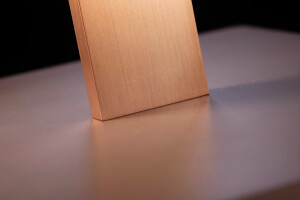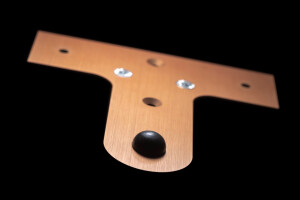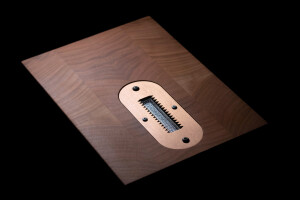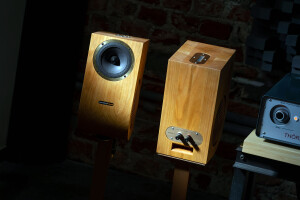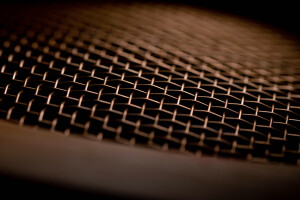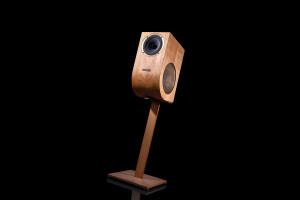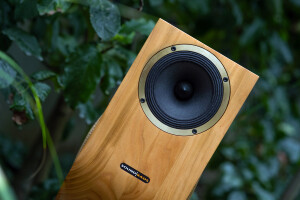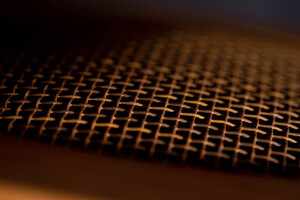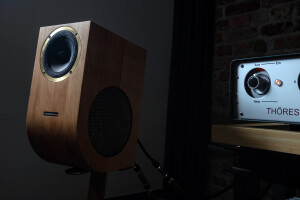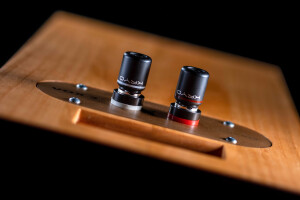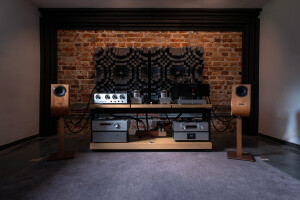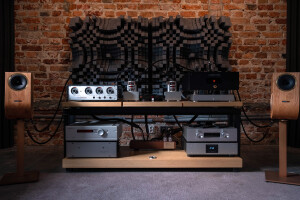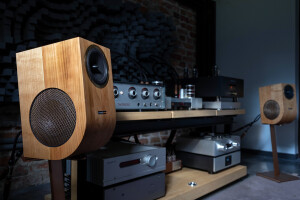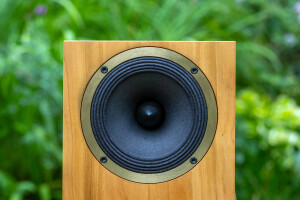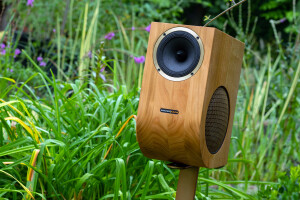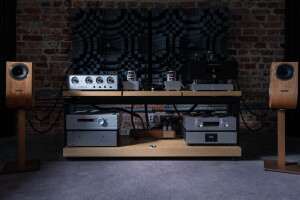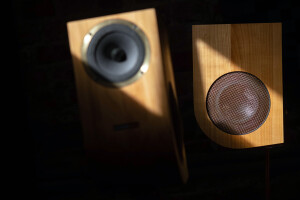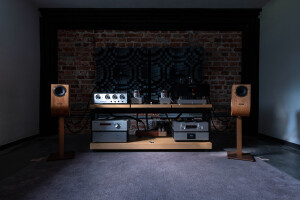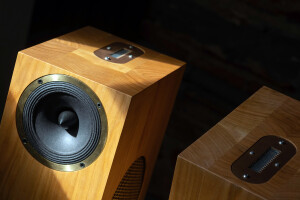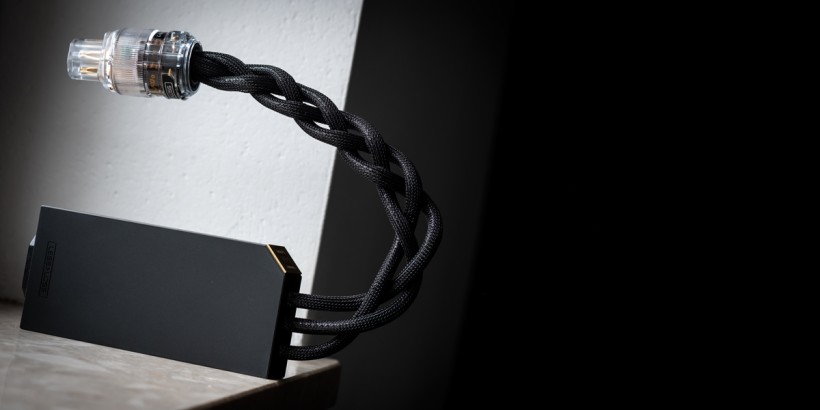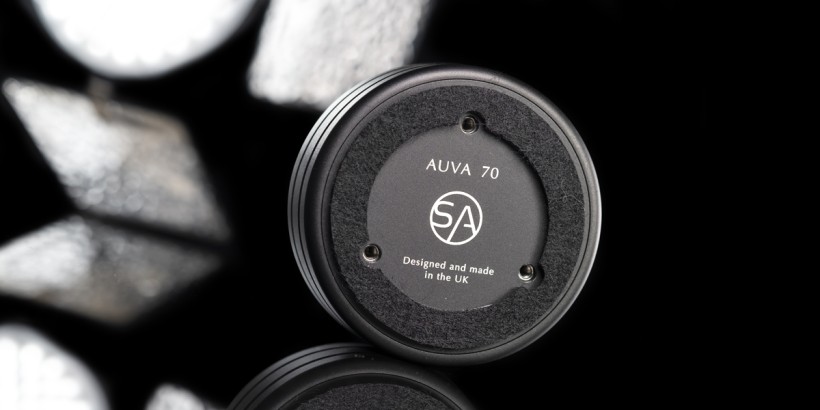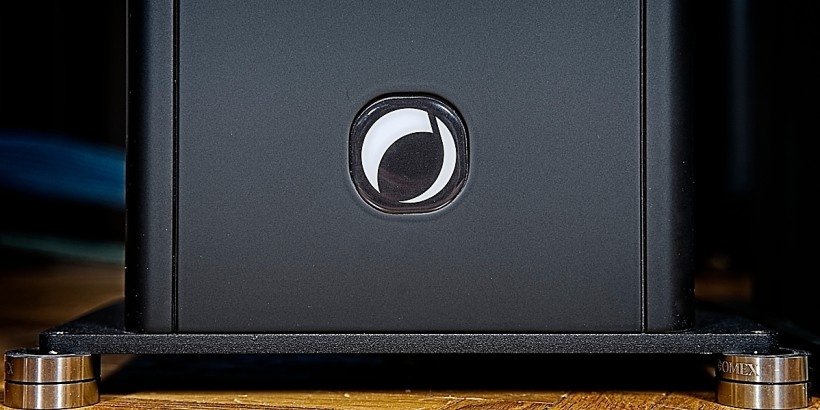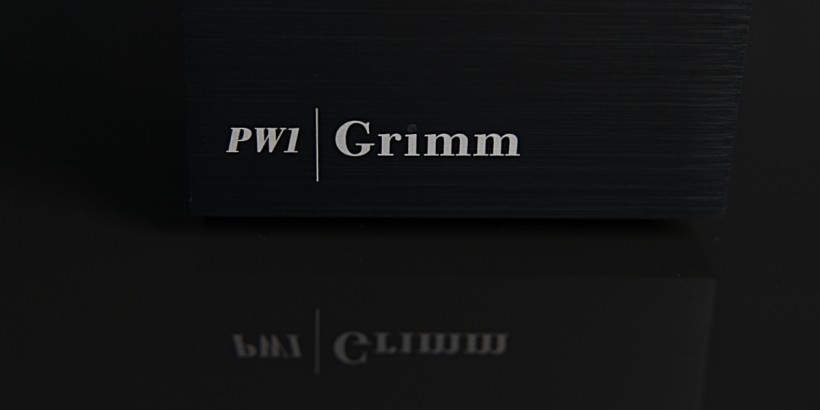Products released under the sound|kaos banner are known for their unique appeal, Swiss origin, top shelf wooden cabinets and exotic drivers. Until recently all were full-sized, but a while ago their maker Martin Gateley detoured towards a more compact form, albeit with firm intent to embed all his trademark features in it. The result of this effort – sound|kaos Vox 3afw – is this report’s main dish. Enjoy!
Introduction
One quick look at any sound|kaos product is all it takes to grasp that this is no regular audio house. Its Wave 42 combines one full-range transducer with auxiliary ribbon tweeter in a floating ovoid cabinet made of tone wood. The next model baptized Libération is an open baffle case free from a box just as its name implies, whereas the upcoming Liber|8 shapes up to be something similar as well. As far as speaker topologies go that’s quite the stretch, but efficiency well above 90dB and sophisticated widebanders with paper cones and Alnico motors up the ante on uniqueness even more. Although it’s very clear that Martin’s entire roster sits at the opposite end of mainstream, one could assume that a product as innocent as a compact monitor should easily fit in there, even if made by an operation as specialist and unusual as his. Wrong.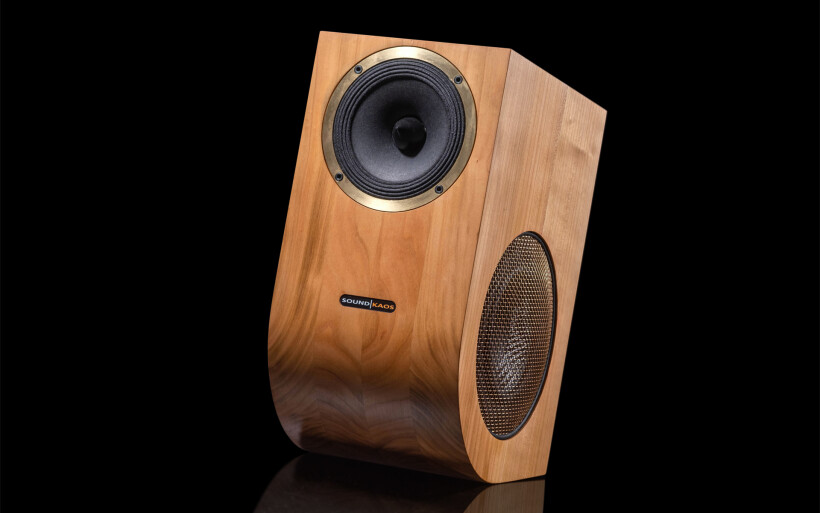 sound|kaos is Martin Gateley’s second business and hobbyist activity, that allows him to let his creative demons out one at a time. His very much non-standard speakers reflect this very well, but they’re results of rare design choices and according measures to land specific voicing and behaviour. Martin sees tone wood, high efficiency and bespoke full-range drivers augmented by ribbons as ingredients necessary to achieve these goals. Since he’s the boss, accountant, key designer and perfectionist clearly obsessed with small things, extensive R&D times and multiple prototypes that follow are his usual MO. Each concept born in his mind eats up years prior to flourishing into a commercially available product. Unsurprisingly this report’s sound|kaos Vox 3afw is no different, but there’s far more to it than meets the eye.
sound|kaos is Martin Gateley’s second business and hobbyist activity, that allows him to let his creative demons out one at a time. His very much non-standard speakers reflect this very well, but they’re results of rare design choices and according measures to land specific voicing and behaviour. Martin sees tone wood, high efficiency and bespoke full-range drivers augmented by ribbons as ingredients necessary to achieve these goals. Since he’s the boss, accountant, key designer and perfectionist clearly obsessed with small things, extensive R&D times and multiple prototypes that follow are his usual MO. Each concept born in his mind eats up years prior to flourishing into a commercially available product. Unsurprisingly this report’s sound|kaos Vox 3afw is no different, but there’s far more to it than meets the eye.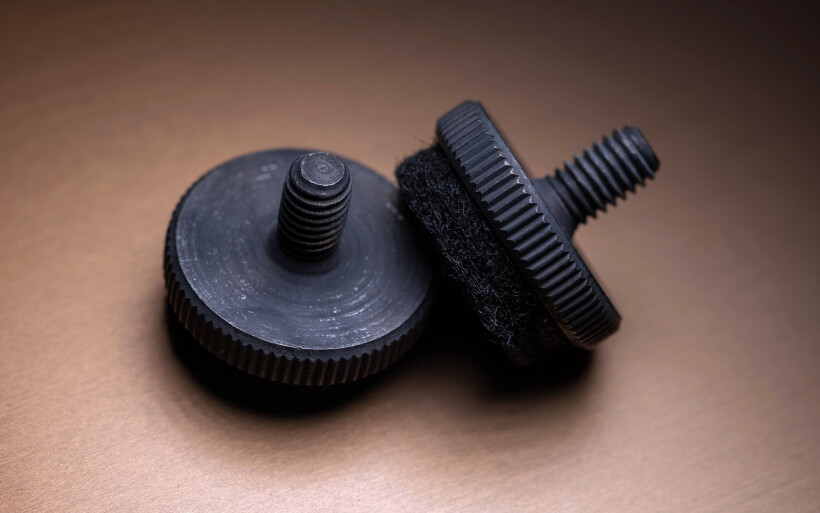 Many manufacturers agree that most audio developments are in 90% finished rather quickly, whereas the true time and money sink are the remaining 10%. Today’s case fits the profile. Not only it’s the smallest sound|kaos to date, but also Martin’s most ambitious. His introductory Vox 3f version hasn’t externally changed since its local debut at the Audio Video Show in 2018, but over the next year was pushed way beyond what it was originally designed to be, to eventually become the upper echelon Vox 3a. Srajan’s separate stories about both listed Vox specimens resulted in 18 pages of content and two awards; the Blue Moon and very rare Lunar Eclipse for the 3f and 3a respectively. These badges clearly spelled Martin’s accomplishment level far above just 100%. Still, to know what’s what I had to conduct my own investigation, which led to a mail with a loaner sample request and its maker’s green light.
Many manufacturers agree that most audio developments are in 90% finished rather quickly, whereas the true time and money sink are the remaining 10%. Today’s case fits the profile. Not only it’s the smallest sound|kaos to date, but also Martin’s most ambitious. His introductory Vox 3f version hasn’t externally changed since its local debut at the Audio Video Show in 2018, but over the next year was pushed way beyond what it was originally designed to be, to eventually become the upper echelon Vox 3a. Srajan’s separate stories about both listed Vox specimens resulted in 18 pages of content and two awards; the Blue Moon and very rare Lunar Eclipse for the 3f and 3a respectively. These badges clearly spelled Martin’s accomplishment level far above just 100%. Still, to know what’s what I had to conduct my own investigation, which led to a mail with a loaner sample request and its maker’s green light.
Build
The loaner set arrived inside of a compact though heavy and robust Barczak flight-case. Both key ingredients were perfectly happy in-between variously shaped and sized foam inserts, some additionally reinforced via ply sheets. Accessories cleverly hid underneath the core compartment featured two sets of brass spikes and felt-lined knurled footers, assembly/manual/specs leaflets, one Allen key with M6 bolts and two metal legs anodized in bronze plus their upper/lower plates to form stands.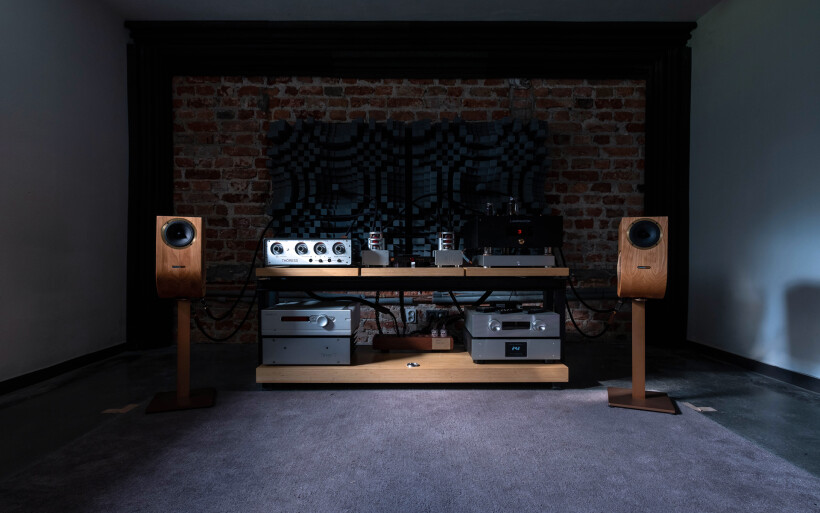 Prior to shipping the cargo Martin had asked whether I fancied more midrange clarity or beefier bass. The former was my choice, which is why the loaner box stored thin bronze rods instead of their far thicker wooden counterparts. The assembly process was a breeze. Upon positioning a speaker upside down, its T-shaped base could be easily detached and bolted softer side down to a brass leg’s one end, whereas the other connected to the lower aluminium plate with felted underbelly, underneath which I installed nicely painted thumb screws instead of their pointy alternatives. Then two bolts went through the previously removed T-plate to gently expand rubber inserts inside their cavities on a cabinet’s bottom. It now locked into this base and rested on its small Sorbothane semi-sphere, which resulted in decoupling that by design was meant to be a bit loose.
Prior to shipping the cargo Martin had asked whether I fancied more midrange clarity or beefier bass. The former was my choice, which is why the loaner box stored thin bronze rods instead of their far thicker wooden counterparts. The assembly process was a breeze. Upon positioning a speaker upside down, its T-shaped base could be easily detached and bolted softer side down to a brass leg’s one end, whereas the other connected to the lower aluminium plate with felted underbelly, underneath which I installed nicely painted thumb screws instead of their pointy alternatives. Then two bolts went through the previously removed T-plate to gently expand rubber inserts inside their cavities on a cabinet’s bottom. It now locked into this base and rested on its small Sorbothane semi-sphere, which resulted in decoupling that by design was meant to be a bit loose.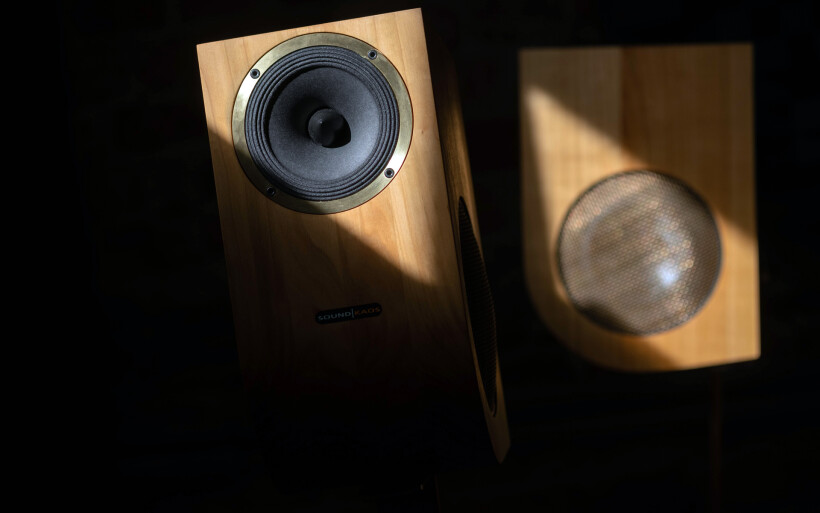 Each sound|kaos Vox 3afw speaker measures (H x W x D) 360 x 175 x 275mm and weighs 7.2kg. The total height of a box with a stand underneath is 860mm, so not a lot by any means and perfectly domesticated. Martin’s naming might seem unclear at first but in practice isn’t. The Latin word ‘Vox’ translates to ‘a voice’, which is very fitting for an audio product. The ‘3a’ suffix indicates a 3-way design with AlNiCo (aluminium-nickel-cobalt) motor units as opposed to the Vox 3f’s ferrite magnets, whereas the ‘fw’ additive informs us about LessLoss’ internal hookup wiring and Firewall modules. The loaner’s bandwidth (-6dB) is 35Hz – 35kHz, sensitivity (2.83Vrms/1m) is 92dB@1kHz and 4Ω nominal impedance seals the deal.
Each sound|kaos Vox 3afw speaker measures (H x W x D) 360 x 175 x 275mm and weighs 7.2kg. The total height of a box with a stand underneath is 860mm, so not a lot by any means and perfectly domesticated. Martin’s naming might seem unclear at first but in practice isn’t. The Latin word ‘Vox’ translates to ‘a voice’, which is very fitting for an audio product. The ‘3a’ suffix indicates a 3-way design with AlNiCo (aluminium-nickel-cobalt) motor units as opposed to the Vox 3f’s ferrite magnets, whereas the ‘fw’ additive informs us about LessLoss’ internal hookup wiring and Firewall modules. The loaner’s bandwidth (-6dB) is 35Hz – 35kHz, sensitivity (2.83Vrms/1m) is 92dB@1kHz and 4Ω nominal impedance seals the deal.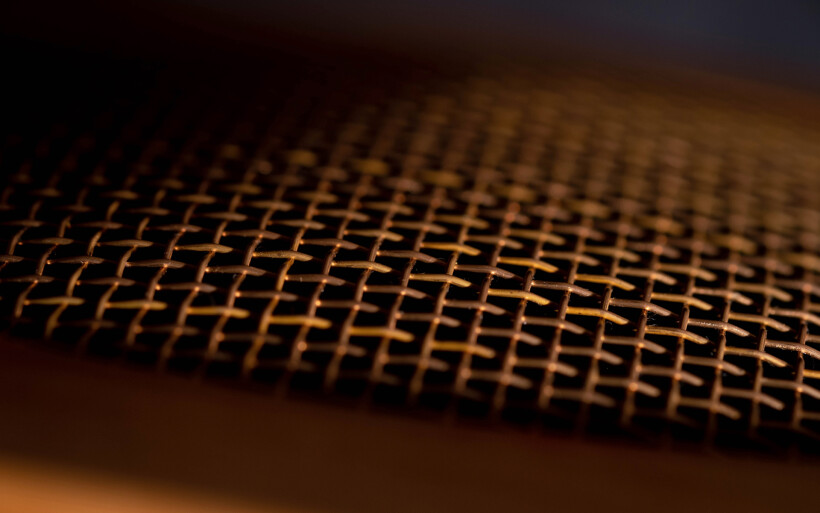 sound|kaos Vox 3afw externally looks interesting to say the least. Each box made of solid wood (walnut or cherry) undergoes oiling and waxing therapy, but can be also ordered all glossy and in colour of choice. Its forehead features only one posh widebander cone with bronze outer ring and a small manufacturer logo a bit below, but the way how this surface gently slopes to connect with the base is what differentiates Martin’s design from the industry’s a bit boring monolithic standard. Each cab’s both cheeks incorporate woofers hid behind a bronze mesh grilles with rubber retainer rings that lock into cavities milled around these drivers. Top mounted Raal’s ribbon tweeter fixed to a custom 2mm bronze plate fires upwards to extend audible brilliance range and boost ambience by turning a room’s ceiling into an omnidirectional diffuser. The business end features a petite bass-reflex port tuned to 35Hz and just a hair above it sits a bronze nameplate with ETI’s top shelf Kryo series binding posts.
sound|kaos Vox 3afw externally looks interesting to say the least. Each box made of solid wood (walnut or cherry) undergoes oiling and waxing therapy, but can be also ordered all glossy and in colour of choice. Its forehead features only one posh widebander cone with bronze outer ring and a small manufacturer logo a bit below, but the way how this surface gently slopes to connect with the base is what differentiates Martin’s design from the industry’s a bit boring monolithic standard. Each cab’s both cheeks incorporate woofers hid behind a bronze mesh grilles with rubber retainer rings that lock into cavities milled around these drivers. Top mounted Raal’s ribbon tweeter fixed to a custom 2mm bronze plate fires upwards to extend audible brilliance range and boost ambience by turning a room’s ceiling into an omnidirectional diffuser. The business end features a petite bass-reflex port tuned to 35Hz and just a hair above it sits a bronze nameplate with ETI’s top shelf Kryo series binding posts.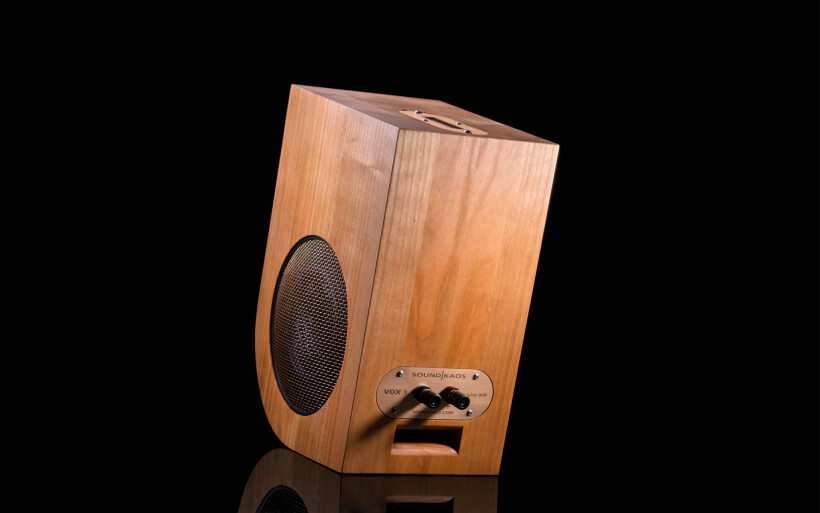 sound|kaos Vox 3afw’s specs tell us that Martin was after high sensitivity to welcome low-powered amps and bandwidth wide enough to get by without supportive subs, which is not unusual considering his other products. However, in case of designs as compact as the man’s latest it’s either generous downstairs reach and low sensitivity (think 84-87dB) or the other way around. The true difficulty thus was in covering these two mutually exclusive bases in a monitor as tiny as Martin’s latest. To answer how the Swiss pulled this off, we need to take a closer look at measures he saw as necessary and people he had worked with.
sound|kaos Vox 3afw’s specs tell us that Martin was after high sensitivity to welcome low-powered amps and bandwidth wide enough to get by without supportive subs, which is not unusual considering his other products. However, in case of designs as compact as the man’s latest it’s either generous downstairs reach and low sensitivity (think 84-87dB) or the other way around. The true difficulty thus was in covering these two mutually exclusive bases in a monitor as tiny as Martin’s latest. To answer how the Swiss pulled this off, we need to take a closer look at measures he saw as necessary and people he had worked with.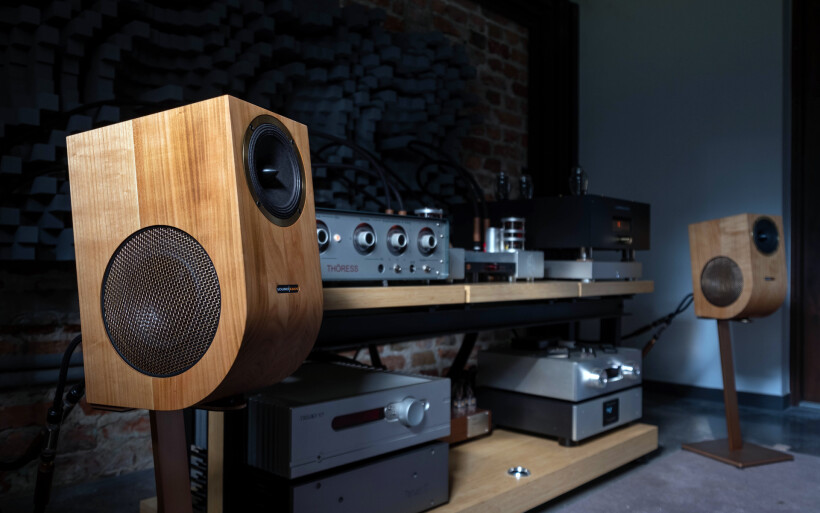 Martin’s first official speaker – sound|kaos Wave 40 – featured a sophisticated custom-made 8″ full-range Enviée driver developed by Armin Galm under his own side business Galm Audio. This product marked both gents’ commercial debut and turned out so well that they’ve been working together ever since. But when the time comes to measure, design and analyze the entire project, Chris Ellis of UK’s CE Electro-Acoustics is Martin’s go-to man, whereas all sound|kaos woodwork he entrusts to Simon Oehrli and his famous Wagnerei Oehrli workshop in Switzerland. That’s four individuals spread across three countries. The big picture is in Martin’s mind. However, the key thing to take note of are his dedication and willingness to send prototypes to specialists back and forth all over the continent, gather feedback, overcome obstacles, change and improve to eventually get the job done. Needless to say, this route takes time, is costly and even more so if Swiss wages apply.
Martin’s first official speaker – sound|kaos Wave 40 – featured a sophisticated custom-made 8″ full-range Enviée driver developed by Armin Galm under his own side business Galm Audio. This product marked both gents’ commercial debut and turned out so well that they’ve been working together ever since. But when the time comes to measure, design and analyze the entire project, Chris Ellis of UK’s CE Electro-Acoustics is Martin’s go-to man, whereas all sound|kaos woodwork he entrusts to Simon Oehrli and his famous Wagnerei Oehrli workshop in Switzerland. That’s four individuals spread across three countries. The big picture is in Martin’s mind. However, the key thing to take note of are his dedication and willingness to send prototypes to specialists back and forth all over the continent, gather feedback, overcome obstacles, change and improve to eventually get the job done. Needless to say, this route takes time, is costly and even more so if Swiss wages apply.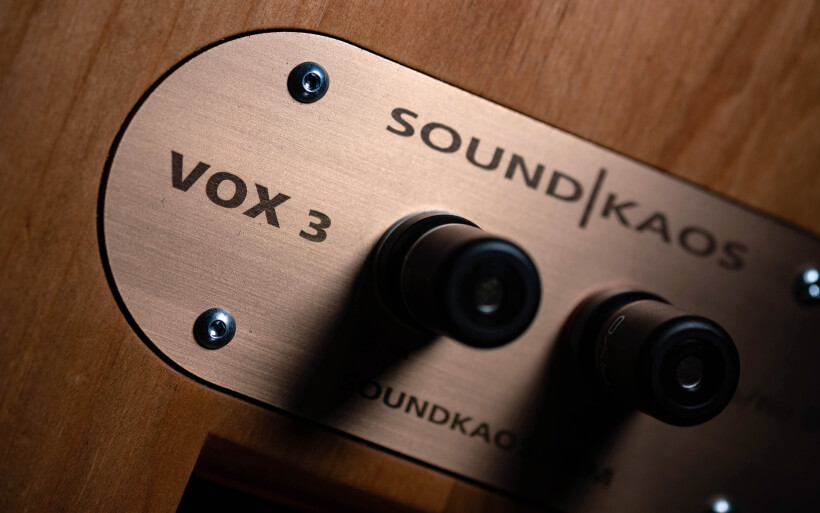 Although sound|kaos Vox 3afw’s enclosures are petite, each houses four transducers in total. Most audio operations rely on off-the-shelf units, but drivers inside this report’s case were either customized or designed from scratch specifically for it. Galm Audio’s twin side-firing 5″ (130mm) woofers cut via 2nd order at 200Hz sport carbon-fiber membranes, neodymium magnets and 37mm-wide voice coils. Although each is originally 84dB efficient, having two aligned oppositely resulted in their force-cancelling action and 6dB boost.
Although sound|kaos Vox 3afw’s enclosures are petite, each houses four transducers in total. Most audio operations rely on off-the-shelf units, but drivers inside this report’s case were either customized or designed from scratch specifically for it. Galm Audio’s twin side-firing 5″ (130mm) woofers cut via 2nd order at 200Hz sport carbon-fiber membranes, neodymium magnets and 37mm-wide voice coils. Although each is originally 84dB efficient, having two aligned oppositely resulted in their force-cancelling action and 6dB boost. The key difference between sound|kaos Vox 3f and 3a is in their full-range transducers; one of TangBand’s regulars is in the former, whereas the far costlier latter’s each cab houses Armin’s bespoke Enviée 4.3-incher (110mm). Its CNC-milled bronze basket alone would set one back more than the entire other driver, but by besting its aluminium counterpart on sonics it had to stay, and the same story is with Alnico magnets. Although several times dearer than ferrite or neodymium, this alloy netted sound richer and more flowing versus the other two. Whizzer-free Enviées feature nylon phase plugs and paper cones with pleated surrounds as their natural extensions, which increase membrane diameter by 0.3″ to avoid artificial surround materials and 1.5-2kHz dips typical for 4-inchers. The 3afw’s widebanders run fully open at the bottom to roll-off gently at 10kHz (2nd order via a single cap), from where Raal’s upfiring ambient ribbon tweeters take over. Their transformer windings adjusted at the Serbian factory allowed for implementation without shelving resistors.
The key difference between sound|kaos Vox 3f and 3a is in their full-range transducers; one of TangBand’s regulars is in the former, whereas the far costlier latter’s each cab houses Armin’s bespoke Enviée 4.3-incher (110mm). Its CNC-milled bronze basket alone would set one back more than the entire other driver, but by besting its aluminium counterpart on sonics it had to stay, and the same story is with Alnico magnets. Although several times dearer than ferrite or neodymium, this alloy netted sound richer and more flowing versus the other two. Whizzer-free Enviées feature nylon phase plugs and paper cones with pleated surrounds as their natural extensions, which increase membrane diameter by 0.3″ to avoid artificial surround materials and 1.5-2kHz dips typical for 4-inchers. The 3afw’s widebanders run fully open at the bottom to roll-off gently at 10kHz (2nd order via a single cap), from where Raal’s upfiring ambient ribbon tweeters take over. Their transformer windings adjusted at the Serbian factory allowed for implementation without shelving resistors.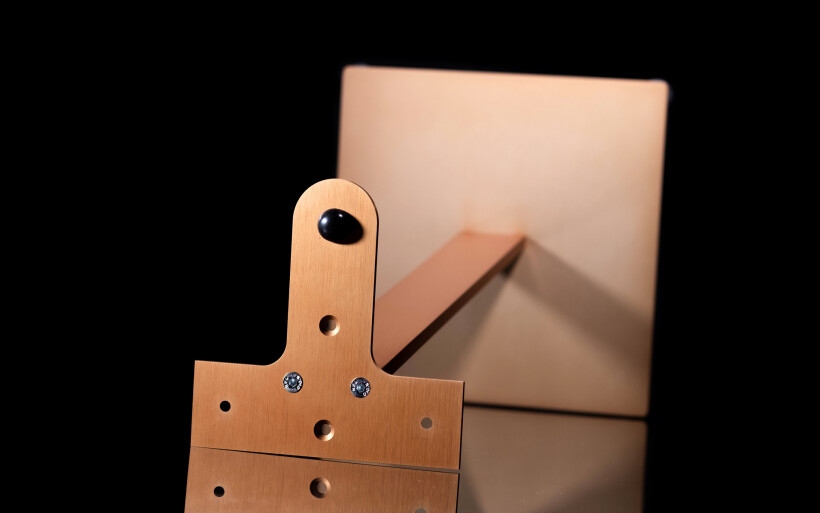 Each cab houses two chambers and has 6.5 liters of internal volume in total. The smaller sealed compartment (1.1l) accommodates just the widebander and modest amount of lamb’s wool, whereas two woofers, crossover, tweeter and several aramid honeycomb damping inserts share the larger space (5.4l). Although the entire x-over network was hid from prying eyes, its three very costly Jantzen Audio Amber Z-Cap (3.3/6.8uF) specimens alone implied Martin’s seriousness and no-compromise attitude. By all means please google these caps and do the math just like I did, a major head scratching afterwards is a given. And lastly, my loaner’s ‘fw’ version also features LessLoss’ internal C-MARC wiring and two Firewall modules hardwired to each circuit board’s inward/outward legs.
Each cab houses two chambers and has 6.5 liters of internal volume in total. The smaller sealed compartment (1.1l) accommodates just the widebander and modest amount of lamb’s wool, whereas two woofers, crossover, tweeter and several aramid honeycomb damping inserts share the larger space (5.4l). Although the entire x-over network was hid from prying eyes, its three very costly Jantzen Audio Amber Z-Cap (3.3/6.8uF) specimens alone implied Martin’s seriousness and no-compromise attitude. By all means please google these caps and do the math just like I did, a major head scratching afterwards is a given. And lastly, my loaner’s ‘fw’ version also features LessLoss’ internal C-MARC wiring and two Firewall modules hardwired to each circuit board’s inward/outward legs.
Sound
My fidata HFAS1-S10U handled storage/transport, then LampizatOr Pacific DAC (KR Audio T-100/Living Voice 300B + KR Audio 5U4G Ltd. Ed.) took over to pass the signal to a Bakoon AMP-13R or Thöress DFP connected either to AGD Productions Audion monos or FirstWatt F7 power amp. From there a Boenicke Audio S3 speaker cable went to the sound|kaos Vox 3afw loaner. Interconnects used were Boenicke Audio IC3 CG and Audiomica Laboratory Erys Excellence where needed. All key hardware was powered by Boenicke Audio Power Gate distributor box with three captive M2s and supportively also LessLoss C-MARCs. The USB chain included the full iFi audio stack; a micro iUSB3.0, nano iGalvanic3.0, three Mercury3.0 USB cables in-between plus one 9V iPower. One set of LessLoss Firewall for Loudspeakers modules complimented all loads in this review and Fidelizer EtherStream was in-between my Linksys WRT160N router and fidata server. A GigaWatt PC-3 SE EVO+ power conditioner fronted by its own LC-3 EVO cable housed PSUs for a USB reclocker, router and network switch.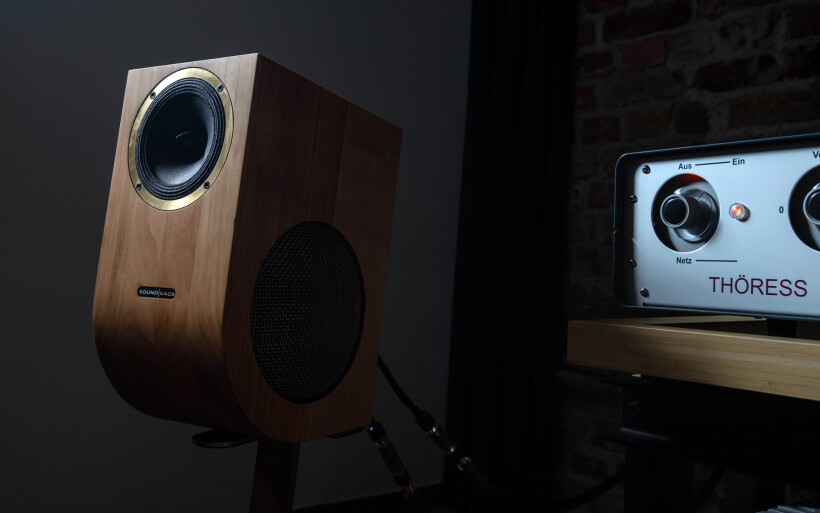 The most suitable position for Martin’s latest product was the first order of business. Although pleasantly straightforward at first, this task rather quickly became quite complex and very surprising at the end. Each speaker landed 150/200cm away from the front wall and listening chair respectively, but purposely with no toe in at all to investigate their off-axis response. This early setting was promising but imaging was too diffused for my taste and some bass boost was clearly needed. Srajan’s two Vox reports already told what needed to be done. Once today’s product’s paper cones started looking at me directly, all virtual shapes nicely locked into place as expected, however its low end was still amiss.
The most suitable position for Martin’s latest product was the first order of business. Although pleasantly straightforward at first, this task rather quickly became quite complex and very surprising at the end. Each speaker landed 150/200cm away from the front wall and listening chair respectively, but purposely with no toe in at all to investigate their off-axis response. This early setting was promising but imaging was too diffused for my taste and some bass boost was clearly needed. Srajan’s two Vox reports already told what needed to be done. Once today’s product’s paper cones started looking at me directly, all virtual shapes nicely locked into place as expected, however its low end was still amiss.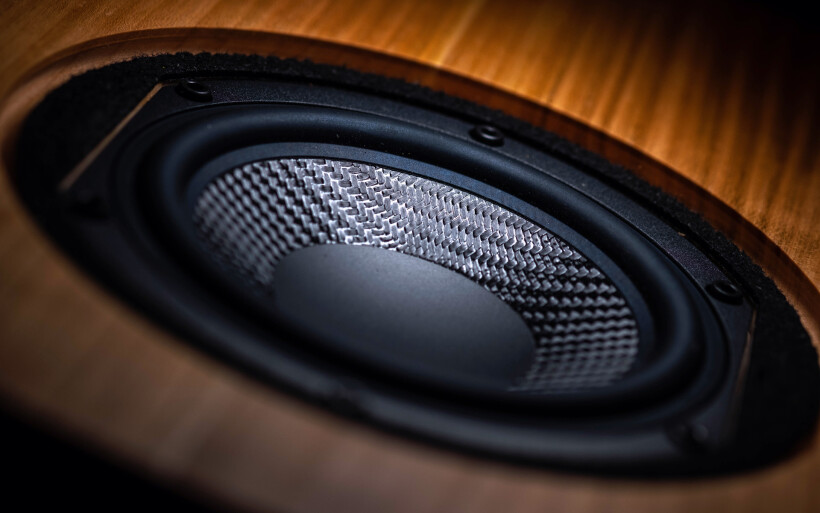 As it turned out, achieving stout bass response, imaging depth, top accuracy and focus in my room was a careful balancing act. Via trial and error I eventually ended up with the Vox set 100/260cm away respectively from the front wall and my seat where both generously toed in boxes crossed. The optimal distance of 240cm between them formed a semi-nearfield equilateral triangle. Most interestingly, even small spacing changes made a rather substantial difference for the Vox. Although it took a while to have everything sorted, I had fun witnessing how well the product responded to tiniest positioning tweaks.
As it turned out, achieving stout bass response, imaging depth, top accuracy and focus in my room was a careful balancing act. Via trial and error I eventually ended up with the Vox set 100/260cm away respectively from the front wall and my seat where both generously toed in boxes crossed. The optimal distance of 240cm between them formed a semi-nearfield equilateral triangle. Most interestingly, even small spacing changes made a rather substantial difference for the Vox. Although it took a while to have everything sorted, I had fun witnessing how well the product responded to tiniest positioning tweaks.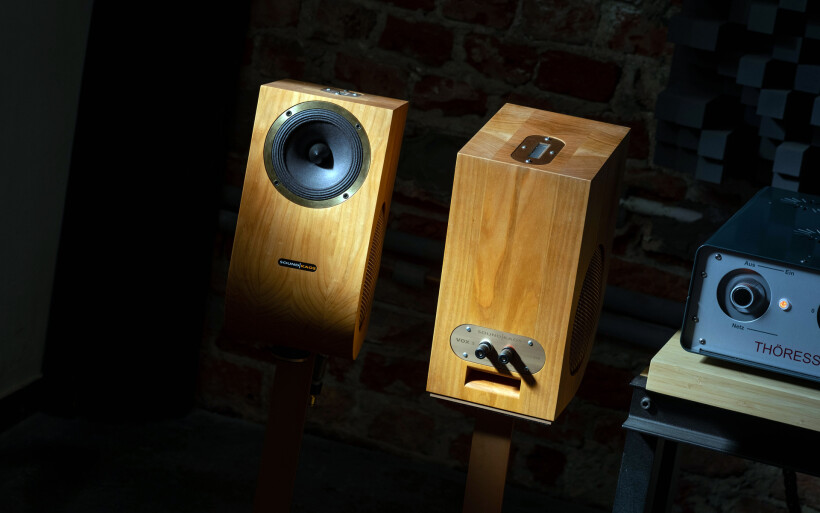 The setup as described brilliantly presented the 3afw’s very much unusual attitude and allowed me to write a fair share of this chapter. But after several days of familiarizing myself with these Swiss petites and understanding them better, eventually I started wondering how far they could be pushed on positioning, or rather how extreme, without paying up in any of their core traits. At that time I remembered what Srajan had mentioned in his own report. If set up as nearfield speakers, products such as the Vox have their in-room interaction naturally reduced. Effectively one hears more sound coming from a box itself and less its reflections bouncing off walls. Due to this particular reason my Boenicke W11 SE+ floorstanders normally sit far closer to the listening chair than front surface, but their design and behaviour allow me to use them like so. At this point the obvious question was whether the Vox could follow suit and still deliver.
The setup as described brilliantly presented the 3afw’s very much unusual attitude and allowed me to write a fair share of this chapter. But after several days of familiarizing myself with these Swiss petites and understanding them better, eventually I started wondering how far they could be pushed on positioning, or rather how extreme, without paying up in any of their core traits. At that time I remembered what Srajan had mentioned in his own report. If set up as nearfield speakers, products such as the Vox have their in-room interaction naturally reduced. Effectively one hears more sound coming from a box itself and less its reflections bouncing off walls. Due to this particular reason my Boenicke W11 SE+ floorstanders normally sit far closer to the listening chair than front surface, but their design and behaviour allow me to use them like so. At this point the obvious question was whether the Vox could follow suit and still deliver.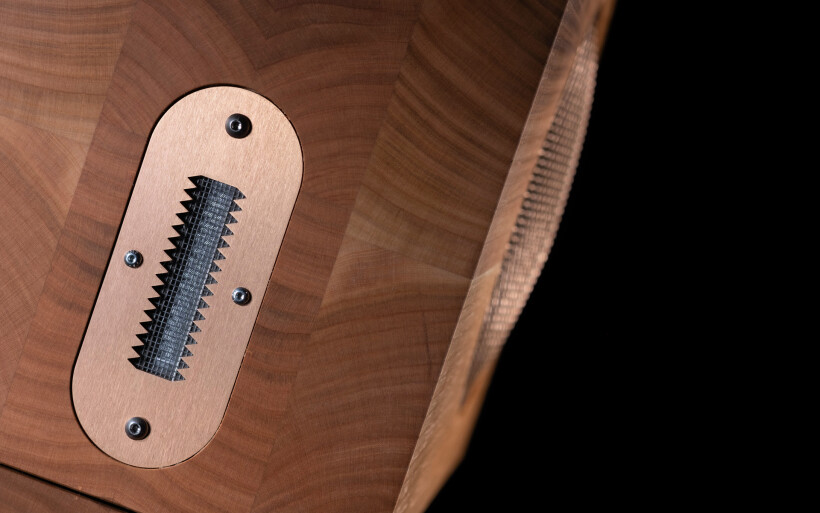 Although Martin’s latest initially struck me as shy on bass, the secret to having this base fully covered was in assistance from sidewalls. Both cabinets’ ports aimed at these surfaces was all it took to land a properly guttural massage. The change that occurred was quite drastic. Now the Vox was moved closer to have 200/150cm to my room’s brick wall and main seat respectively. It was also toed in more sharply than before but space in-between both cabinets remained unchanged. The resulting isosceles triangle was very much headphone-alike and personal. This scenario proved so good that I didn’t even bother looking back at the previous also perfectly viable positioning plot, not even once. Although many individuals would see this intimate setup as radical, by my standards it wasn’t. What caught me off guard however was how much more mental the entire Vox experience has become in the process.
Although Martin’s latest initially struck me as shy on bass, the secret to having this base fully covered was in assistance from sidewalls. Both cabinets’ ports aimed at these surfaces was all it took to land a properly guttural massage. The change that occurred was quite drastic. Now the Vox was moved closer to have 200/150cm to my room’s brick wall and main seat respectively. It was also toed in more sharply than before but space in-between both cabinets remained unchanged. The resulting isosceles triangle was very much headphone-alike and personal. This scenario proved so good that I didn’t even bother looking back at the previous also perfectly viable positioning plot, not even once. Although many individuals would see this intimate setup as radical, by my standards it wasn’t. What caught me off guard however was how much more mental the entire Vox experience has become in the process.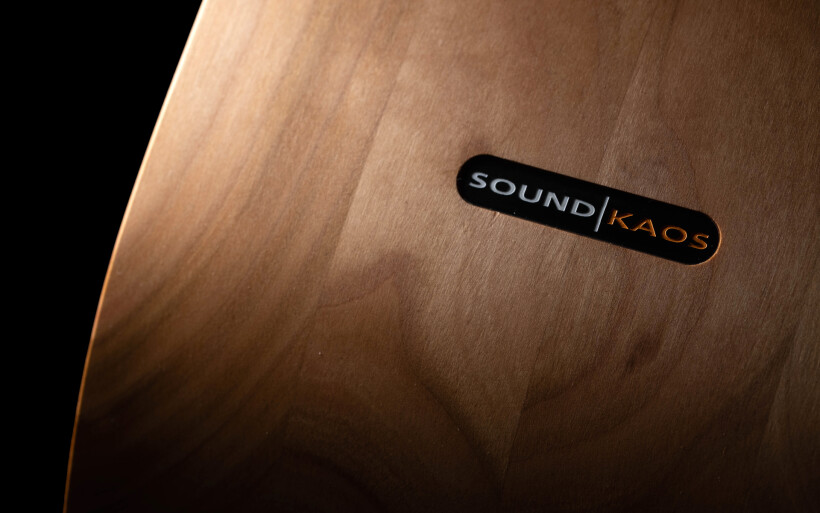 If Martin’s speakers just next to my rack presented music as fully alive and perfectly orderly, then their presence some two arm’s lengths away from my head put me in it. The difference was comparable to seeing a landscape watercolor in an art gallery, and going to the scenery an artist had to visit to immortalize it on his canvas. When describing soundstage I often rely on its depth, wideness and height, to then put in words how all virtual outlines rendered in this space look like; whether they’re big or small, distant or intimate, chiseled or soft and so on so forth. In case of the Vox all these measures seem redundant if not silly. Yes, it staged enormously large and expansive in all directions, to in fact grow gargantuan on this count. Yes, it was as oxygenated, wide and deep as a given recording allowed. Yes, it left all restrictions associated with its petite frame at the door. But how to describe sound sources put in my head so well, that the sensation was similar to being on-stage surrounded by musicians instead of experiencing their act from the first, second or any other row meant for audience? Headphones pull such acoustic bubbles and powerful illusions with ease, and now so did the Vox. It then upped the ante by granting me the VIP pass to go on/off-stage as I pleased, but the total travelling distance from one place to another was mere 100cm. Mental indeed.
If Martin’s speakers just next to my rack presented music as fully alive and perfectly orderly, then their presence some two arm’s lengths away from my head put me in it. The difference was comparable to seeing a landscape watercolor in an art gallery, and going to the scenery an artist had to visit to immortalize it on his canvas. When describing soundstage I often rely on its depth, wideness and height, to then put in words how all virtual outlines rendered in this space look like; whether they’re big or small, distant or intimate, chiseled or soft and so on so forth. In case of the Vox all these measures seem redundant if not silly. Yes, it staged enormously large and expansive in all directions, to in fact grow gargantuan on this count. Yes, it was as oxygenated, wide and deep as a given recording allowed. Yes, it left all restrictions associated with its petite frame at the door. But how to describe sound sources put in my head so well, that the sensation was similar to being on-stage surrounded by musicians instead of experiencing their act from the first, second or any other row meant for audience? Headphones pull such acoustic bubbles and powerful illusions with ease, and now so did the Vox. It then upped the ante by granting me the VIP pass to go on/off-stage as I pleased, but the total travelling distance from one place to another was mere 100cm. Mental indeed.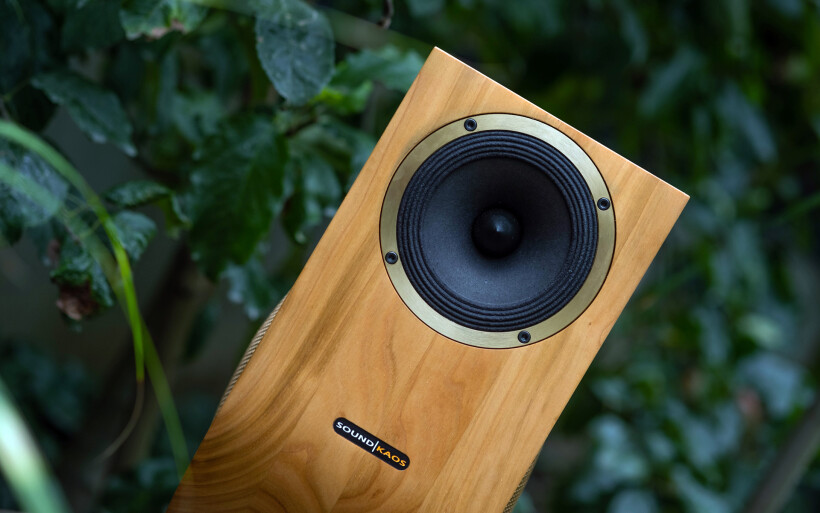 All very much lifelike imagery created by the Vox wouldn’t have happened without its pinpoint accuracy, natural expressiveness, generous tonal density and immediacy. Quality full-range transducers tick all these checkboxes, which is also the reason why this report’s load on vocal and instrumental jobs quickly reminded me about Cube Audio’s Nenuphar. The former’s general profile was alike direct, outlined and insightful, but also texturally moist, palpable, organic and free from garishness, shout, fuzz and veil.
All very much lifelike imagery created by the Vox wouldn’t have happened without its pinpoint accuracy, natural expressiveness, generous tonal density and immediacy. Quality full-range transducers tick all these checkboxes, which is also the reason why this report’s load on vocal and instrumental jobs quickly reminded me about Cube Audio’s Nenuphar. The former’s general profile was alike direct, outlined and insightful, but also texturally moist, palpable, organic and free from garishness, shout, fuzz and veil. Most monitors lean towards either clarity, detailing and generously applied air or substance and roundness, but the Vox finely combined all these features and didn’t go extreme on any in particular. It didn’t matter whether I listened to Luca Stricagnoli’s guitar, Björk’s voice or Ladysmith Black Mambazo’s choir, the 3afw clearly thrived on such challenging content. The way it had all information blended with muscle tissue and colour was superbly executed by my standards. Its delicate, sensual, smooth and profoundly believable voicing translated to emotionally loaded, deeply engaging, intimate and highly intense musical experience way beyond what regular listening sessions usually provide. Nothing about it was casual.
Most monitors lean towards either clarity, detailing and generously applied air or substance and roundness, but the Vox finely combined all these features and didn’t go extreme on any in particular. It didn’t matter whether I listened to Luca Stricagnoli’s guitar, Björk’s voice or Ladysmith Black Mambazo’s choir, the 3afw clearly thrived on such challenging content. The way it had all information blended with muscle tissue and colour was superbly executed by my standards. Its delicate, sensual, smooth and profoundly believable voicing translated to emotionally loaded, deeply engaging, intimate and highly intense musical experience way beyond what regular listening sessions usually provide. Nothing about it was casual.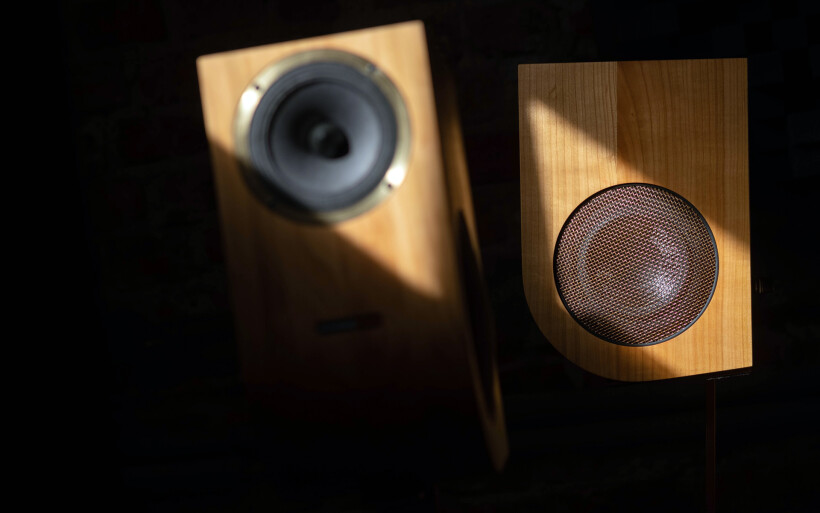 The next surprise the Vox had in store for me was its bass response in my room. Many compact products on this count are beefy if not a bit inflated to make up for lack of proper low end extension. Martin’s newcomer reversed this order by very deep reach more felt rather than heard, and everything higher up not boosted but instead agile, fit and exceptionally elastic. The result was snappy, perfectly controlled, meaty and pleasantly moist regardless of music on the menu, but never boomy, slow or overpowering in any way. The Vox very easily changed its bass accordingly to it; from stiff, powerful and authoritative to fluffier, rounder and softer one track later. But above all else, its meticulous downstairs department complemented widebanders instead of fighting for one’s attention with them, whereas Raal’s transducers further stretched this conjoined effort to seamlessly blend in with Enviées. The Swiss 3-way pack of four had no clear leader.
The next surprise the Vox had in store for me was its bass response in my room. Many compact products on this count are beefy if not a bit inflated to make up for lack of proper low end extension. Martin’s newcomer reversed this order by very deep reach more felt rather than heard, and everything higher up not boosted but instead agile, fit and exceptionally elastic. The result was snappy, perfectly controlled, meaty and pleasantly moist regardless of music on the menu, but never boomy, slow or overpowering in any way. The Vox very easily changed its bass accordingly to it; from stiff, powerful and authoritative to fluffier, rounder and softer one track later. But above all else, its meticulous downstairs department complemented widebanders instead of fighting for one’s attention with them, whereas Raal’s transducers further stretched this conjoined effort to seamlessly blend in with Enviées. The Swiss 3-way pack of four had no clear leader.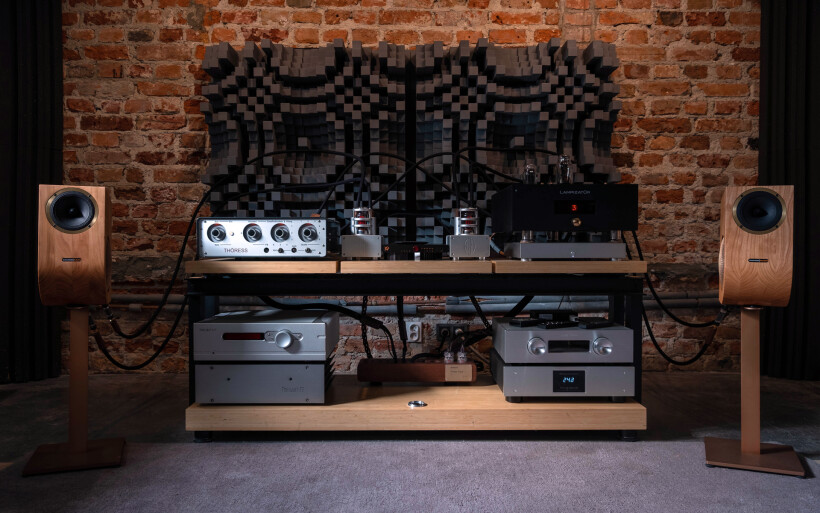 Although this can be said about many small monitors, the Vox’s admirably substantial smooth top end decayed long enough to recognize quality shimmers brimming with easefully served details. Serbian ribbons along with inherently expressive paper cones also contributed to the 3afw’s sunny disposition; always finely lit up and lucid yet never too hot or piercing. Still, its entire audible range dissected into smaller bits like I just did, misses the big picture. How this report’s sound|kaos delivered everything at once is of far greater importance. Its transducers were combined so expertly that it effectively behaved like a purist utmost capable full-range affair. Think Cube Audio Nenuphar’s distinctive voicing, pronunciation, refinement and stout bass, but pulled by compact ported monitors instead of coffins each with 127 liters of internal volume and folded transmission line escape plot. Without comparing them directly I can’t of course know where exactly the Vox would land against the full-sized Polish marvel, but its adherence to this particularly fetching sonic club was omnipresent. I had no idea a product as small as the Vox could do this type of sensationally coherent big bore work, but now I do.
Although this can be said about many small monitors, the Vox’s admirably substantial smooth top end decayed long enough to recognize quality shimmers brimming with easefully served details. Serbian ribbons along with inherently expressive paper cones also contributed to the 3afw’s sunny disposition; always finely lit up and lucid yet never too hot or piercing. Still, its entire audible range dissected into smaller bits like I just did, misses the big picture. How this report’s sound|kaos delivered everything at once is of far greater importance. Its transducers were combined so expertly that it effectively behaved like a purist utmost capable full-range affair. Think Cube Audio Nenuphar’s distinctive voicing, pronunciation, refinement and stout bass, but pulled by compact ported monitors instead of coffins each with 127 liters of internal volume and folded transmission line escape plot. Without comparing them directly I can’t of course know where exactly the Vox would land against the full-sized Polish marvel, but its adherence to this particularly fetching sonic club was omnipresent. I had no idea a product as small as the Vox could do this type of sensationally coherent big bore work, but now I do.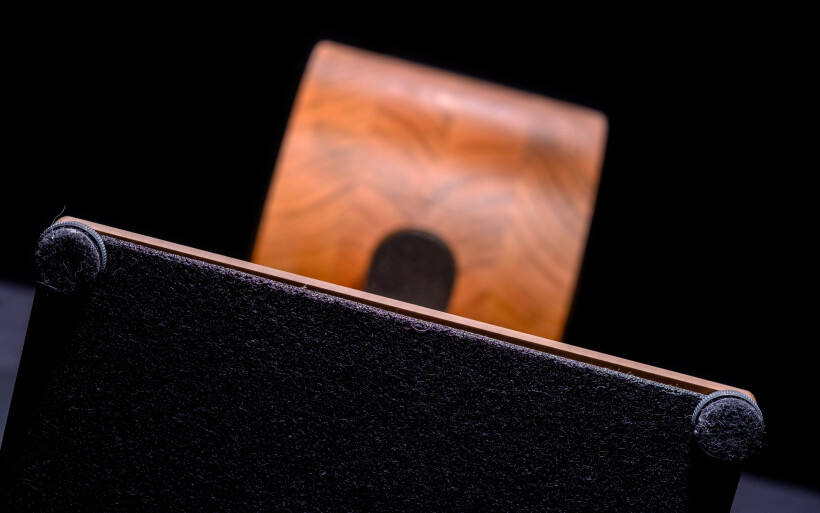 At this stage I couldn’t tell what impressed me more; the Vox’s fully mature full-range flavour, or its puny frame in the context of this mighty action. It was of no importance which one was it, on the contrary to the fact that today’s speakers had me constantly at the edge of my seat. Once I knew what they did and how, it was time to include extra hardware and learn what sort of company was the most suitable for them. Srajan’s own story and Martin’s suggestions listed Bakoon’s AMP-13R integrated as the perfect match, which I luckily had nearby also. In fact it was my tool of choice used to investigate the Vox’s profile and write everything up to this point, but this load’s high efficiency allowed for several extra triangulations.
At this stage I couldn’t tell what impressed me more; the Vox’s fully mature full-range flavour, or its puny frame in the context of this mighty action. It was of no importance which one was it, on the contrary to the fact that today’s speakers had me constantly at the edge of my seat. Once I knew what they did and how, it was time to include extra hardware and learn what sort of company was the most suitable for them. Srajan’s own story and Martin’s suggestions listed Bakoon’s AMP-13R integrated as the perfect match, which I luckily had nearby also. In fact it was my tool of choice used to investigate the Vox’s profile and write everything up to this point, but this load’s high efficiency allowed for several extra triangulations.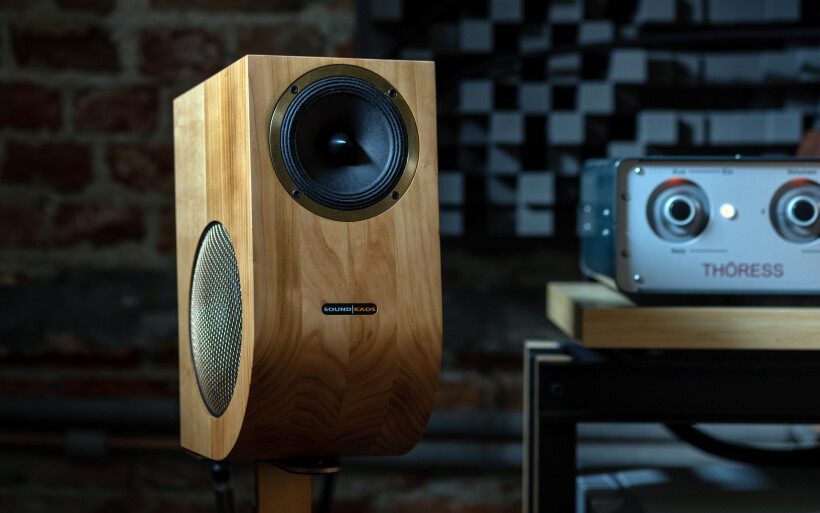 The Vox/Pass Labs INT-25 combo I’d already tackled in this report. Suffice to say, the Swiss didn’t sound like a small monitor with this or any other amp I’d used, but was admirably posh, tactile and elastic with them all. Its core flavour built upon clear outlines, expressiveness, textural moisture and directness was pronounced firmly enough to remain sensible regardless of hardware engaged. Knowing how the Vox behaved powered by the Bakoon, next it connected to the FirstWatt F7 fronted by Thöress DFP to instantly become a fair bit darker, earthlier, rounder and massive. Although some of the Swiss’ quicksilvery attitude was no longer there, extra gravity injection at a small cost in agility and dynamic might I viewed as a good deal and viable alternate route. Without previously witnessing what the AMP-13R pulled with the 3afw, I’d easily call the latter’s marriage to the DFP/F7 set as a happily ever after case. Then Nelson Pass’ power amp stepped down to make room for Alberto Guerra’s Audion class D monos. The Vox now shifted one gear up to become feistier, more open-throated, muscular and flexible on stout artificial bass lines, but on vocal and instrumental tasks it remained as calm, sensual, composed and meticulous as ever.
The Vox/Pass Labs INT-25 combo I’d already tackled in this report. Suffice to say, the Swiss didn’t sound like a small monitor with this or any other amp I’d used, but was admirably posh, tactile and elastic with them all. Its core flavour built upon clear outlines, expressiveness, textural moisture and directness was pronounced firmly enough to remain sensible regardless of hardware engaged. Knowing how the Vox behaved powered by the Bakoon, next it connected to the FirstWatt F7 fronted by Thöress DFP to instantly become a fair bit darker, earthlier, rounder and massive. Although some of the Swiss’ quicksilvery attitude was no longer there, extra gravity injection at a small cost in agility and dynamic might I viewed as a good deal and viable alternate route. Without previously witnessing what the AMP-13R pulled with the 3afw, I’d easily call the latter’s marriage to the DFP/F7 set as a happily ever after case. Then Nelson Pass’ power amp stepped down to make room for Alberto Guerra’s Audion class D monos. The Vox now shifted one gear up to become feistier, more open-throated, muscular and flexible on stout artificial bass lines, but on vocal and instrumental tasks it remained as calm, sensual, composed and meticulous as ever.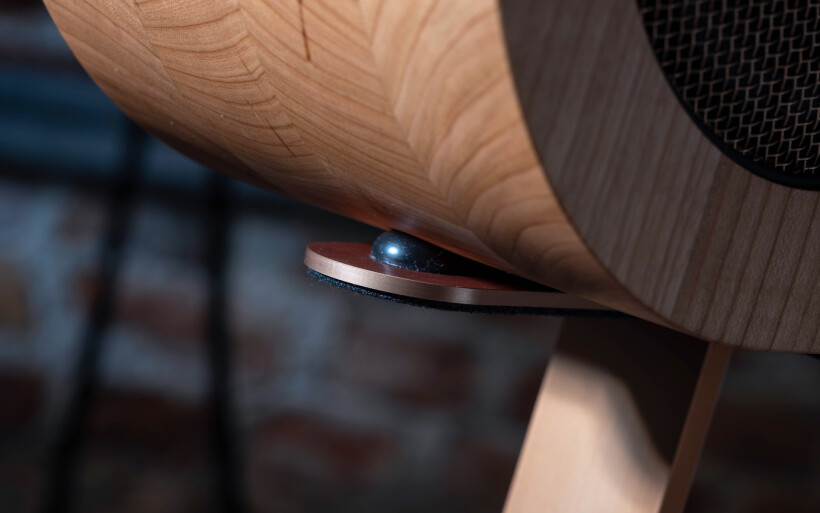 Past all previous experiences, the Vox back on duty with the Bakoon now struck me as the most outlined, rapid, lean, oxygenated and astute, but that doesn’t quite tell the full story. If I were to stop here, on substance-to-clarity ratio the DFP/Audion set was the most balanced with Swiss speakers, the F7 leaned more towards heft and serenity, and the AMP-13R had them the most agile, lean and illuminated. However, on textural complexity, flex and connective tissue in-between all sound sources, the Bakoon did something extra beyond reach of other amps. Its greatest strength is the ability to artfully merge tonal colouring, softness and humidity with inherent lucidity, snap, air and quickness. It so happens that Martin’s latest grew very fond of this specific concoction of traits and so did my ears. Although the AMP-13R was this report’s golden ticket, each other deck also worked brilliantly with today’s load and there was no question about it.
Past all previous experiences, the Vox back on duty with the Bakoon now struck me as the most outlined, rapid, lean, oxygenated and astute, but that doesn’t quite tell the full story. If I were to stop here, on substance-to-clarity ratio the DFP/Audion set was the most balanced with Swiss speakers, the F7 leaned more towards heft and serenity, and the AMP-13R had them the most agile, lean and illuminated. However, on textural complexity, flex and connective tissue in-between all sound sources, the Bakoon did something extra beyond reach of other amps. Its greatest strength is the ability to artfully merge tonal colouring, softness and humidity with inherent lucidity, snap, air and quickness. It so happens that Martin’s latest grew very fond of this specific concoction of traits and so did my ears. Although the AMP-13R was this report’s golden ticket, each other deck also worked brilliantly with today’s load and there was no question about it. One last thing on the to-do list was the 3afw’s comparison to my basic non-SE/SE+ Boenicke W5, also well-known for spatial grandeur and top notch nearfield compliance. If positioned like so, it easily pulls headphone-alike stunts, vanishes from sight and renders all virtual shapes pinpoint accurately. Nonetheless, my W5s’ bass was rounder, weightier and optically smaller versus the more elastic, deeper, snappier and nimble Vox. But the biggest disparity was in how both combatants projected midrange and all outlines in their respective sound fields. The sound|kaos was more direct, intimate, articulate, expressive and tonally sunnier versus the more distant, cloudier and texturally less loaded W5. The 3afw in effect provided greater sensation of presence, firmness and insight, whereas Boenicke Audio’s smallest champ was more diffused and dreamier. This alone changed a lot in how both products executed i.e. vocals and acoustic guitars, the Vox with such tasks was exceptional. All things considered, these were two differently tiered performers, which their respective price tags reflected accurately as well.
One last thing on the to-do list was the 3afw’s comparison to my basic non-SE/SE+ Boenicke W5, also well-known for spatial grandeur and top notch nearfield compliance. If positioned like so, it easily pulls headphone-alike stunts, vanishes from sight and renders all virtual shapes pinpoint accurately. Nonetheless, my W5s’ bass was rounder, weightier and optically smaller versus the more elastic, deeper, snappier and nimble Vox. But the biggest disparity was in how both combatants projected midrange and all outlines in their respective sound fields. The sound|kaos was more direct, intimate, articulate, expressive and tonally sunnier versus the more distant, cloudier and texturally less loaded W5. The 3afw in effect provided greater sensation of presence, firmness and insight, whereas Boenicke Audio’s smallest champ was more diffused and dreamier. This alone changed a lot in how both products executed i.e. vocals and acoustic guitars, the Vox with such tasks was exceptional. All things considered, these were two differently tiered performers, which their respective price tags reflected accurately as well.
Summary
Costly compact monitors are challenging. Their inconspicuous frames often imply performance not serious enough to keep up with full-sized boxes loaded with larger more numerous drivers, and breaking free from thinking that big cash should buy big stuff is a major mental exercise on its own. But when small rooms come into play, new rules apply to turn some assumptions and stereotypes into misconceptions and silliness. At times it’s shocking what tiny speakers on their tiny legs are capable of in such spaces, whereas in mine the sound|kaos Vox 3afw followed suit well enough to now finish this story in red.
Whether sound|kaos Vox 3afw’s visual floats your boat is up to a subjective debate, but its maker’s fanatical attention to details isn’t. Artisanal fit’n’finish, solid wood, non-standard bespoke drivers, multiple custom touches and very costly components all scream unreasonably high effort that went into this product. No regular audio manufacture would go this far. But then again, Martin’s operation never was and unnecessarily well-made audio is its motto after all. And if you still don’t like what you see on my photos, their Swiss-made object can be ordered glossy and painted in all colors you can think of.
The biggest surprise the sound|kaos Vox 3afw had in store for me was its profoundly enjoyable distinct full-range flavor that normally calls for far larger cabs, folded transmission lines and stout internal volumes. On this count it did what no other similar product known to me does, but the fact alone that its two petite Swiss boxes actually managed sonics reserved for specialist floorstanding loudspeakes is quite insane. Let’s add fabulous brilliance region, mind-bending spatial qualities, big-bore bass and presto, sound|kaos Vox 3afw emerged as the supreme leader of the compact kind, hence the Victor award below. It also expresses my admiration for Martin Gateley’s willingness to press on in relentless pursuit of such uniqueness and getting there. If full-fledged full-range sophistication dressed in a brilliantly executed compact package is what you’re after, his latest is worth every penny. ‘Til next time!
Associated Equipment:
- Amplifier: AGD Productions Audion, Bakoon AMP-13R, FirstWatt F7
- DAC: LampizatOr Pacific (KR Audio T-100 / Living Voice 300B + KR Audio 5U4G Ltd. Ed.)
- Speakers: Boenicke Audio W11 SE+, Boenicke Audio W5
- Transport: fidata HFAS1-S10U
- Preamplifier: Thöress DFP
- Speaker cables: Boenicke Audio S3, LessLoss C-MARC
- Speaker signal conditioning: LessLoss Firewall for Loudspeakers
- Interconnects: Boenicke Audio IC3 CG
- Power components: Gigawatt PC-3 SE EVO+/LC-3 EVO, LessLoss C-MARC, Boenicke Audio Power Gate
- USB components: iFi audio iGalvanic3.0, iFi audio micro iUSB3.0, 3x iFi audio Mercury3.0, iPower 9V
- Rack: Franc Audio Accesories Wood Block Rack
- Network: Fidelizer EtherStream, Linksys WRT160N
- Music: NativeDSD, Roon
Retail prices of reviewed components in EU (excl. tax):
- sound|kaos Vox 3afw: €10,313/pr
- sound|kaos Vox 3ac (gloss lacquer of a customer’s choice): €9’688/pr
- sound|kaos Vox 3a (oiled/waxed walnut or cherry): €8’795/pr
- Wood/metal stands: €445/pr
- Internal LessLoss Firewall modules: €1’518
Manufacturer: sound|kaos



